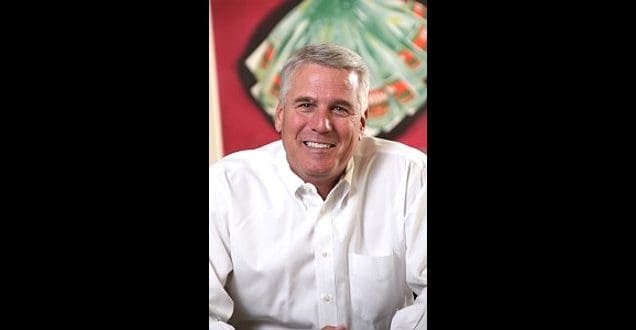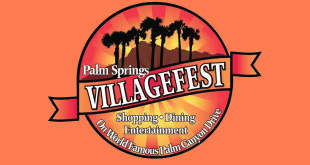Scott Kiner is the CEO/Managing Partner of Kiner Communications, a full-service advertising and marketing firm based in Palm Desert, California. The son of baseball great and New York Mets announcer Ralph Kiner, Scott grew up in the broadcast booth at Shea Stadium. He went into broadcasting as a sports reporter in the late 70s and later worked for major radio networks in North America and provided color commentary on cable networks such as ESPN.
Moving to media management, Scott Kiner joined KCMJ AM/FM in Palm Springs, California in 1986. During his seven-year tenure as Station Manager, the stations enjoyed record audience levels, finishing #1 in the ratings. At that time, Scott founded the Palm Springs Radio Broadcasters Association, and went on to run a national radio syndication company with his step-father, Jack Whitaker, a three-time National Emmy winner and member of the Broadcasting Hall-of-Fame. Scott then founded Kiner Communications in 1994.
Scott Kiner currently serves as Communications Chair on the Board of the United Way of the Desert and has been past Chairman of the Riverside County Chapter of the American Red Cross. He has lectured on marketing at the College of the Desert, California State University San Bernardino and at the University of California, Riverside MBA program in Palm Desert.
KB: Scott, we first met in 1998 when I worked for your agency before going on to co-launch PalmSprings.com. You ran a premier group then, and I understand Kiner Communications remains one of the largest full-service advertising and marketing agency in the Inland Empire—congratulations! In an age where so many businesses fail, what do you feel has contributed to your enduring success?
Scott Kiner: The key to my success has been understanding that change is constant and surrounding myself with talented people who understand their roles in a marketing company. In its simplest definition, marketing is the art of taking a product or service to market for profit. Our team at Kiner Communications is very good at doing that for our clients.
KB: You weren’t always in the advertising game. You had quite the sports broadcasting career, following in the footsteps of your famous father, Ralph Kiner. And you’ve had more than a few brushes with celebrity yourself—didn’t I hear that you once employed Jimmy Kimmel and gave Carson Daly his first broadcasting job?
SK: I guess I have an eye for talent. I was working as GM of KCMJ AM/FM in Palm Springs and I hired Carson as an on-air intern to be part of my morning show hosted by Jimmy Kimmel in 1988. As you know, both went on to much bigger and far more lucrative opportunities. Kimmel once talked me into letting him paint his own billboard that read “Kimmel in the Mornings,” after which people accused me of encouraging graffiti. I had to cover it over.
KB: And what led to you founding Kiner Communications?
SK: When I was GM of the radio stations clients would ask me if I could recommend a good local advertising agency and I would say I couldn’t recommend anyone, not knowing I was defining a huge business opportunity in the marketplace. So in 1994, with a little bit of money and some credit, I started Kiner Communications—which grew to be the largest marketing firm in the Inland Empire. We have since scaled back a little but we still handle over five million in capitalized billing per year.
KB: As we both know, the Advertising business has changed stratospherically since its Madison Avenue roots, not to mention the digital revolution. Is there anything remotely “Mad Men” about the ad biz today?
SK: No, not really! At least not at Kiner Communications. Every job or project has a unique job ticket and each job ticket has multiple tasks assigned to multiple resources. We average approximately 2500 job tickets each year. That’s nearly 48 jobs per week. A job could be as simple as designing a newspaper ad to creating and e-commerce website. There are no 40 hour weeks at Kiner Communications.
KB: How has Kiner Communications navigated the rapidly shifting ecosystems of Data Mining, Big Data, Analytics, and Digital Communications? How do these events shift your marketing practices?
SK: The average US person spends more time online per day than they do watching the TV. Understanding the need for responsive digital communications, is a must if a business is to survive in the modern world. The modern father of advertising, John Wanamaker, once said in the 1800s, “Half of my advertising dollars are wasted—I just don’t know which half.” In the online digital market, we get so much data that we can tell what’s working and what isn’t working. At Kiner Communications we saw the trend coming and were early adopters to online marketing.
KB: Numerous studies show that brands are increasingly (and, in many cases, aggressively) moving budgets from traditional media toward online content marketing. What percentage of your clients’ marketing budgets on average are allocated to online/digital?
SK: In some cases almost 100%, but on average only about 10%. But that figure keeps getting larger because traditional media keeps shrinking. Average time spend per day with newspapers, magazines, and radio has been steadily declining and television is flat at best. The only medium that is growing is online, especially mobile online.
KB: In light of all current market knowledge on consumer behavior and forecasts, I find it astonishing that so many companies are still spending big money on “dead trees,” as I call it (print newspapers and magazines), despite their inability to track results via this medium in any meaningful fashion. Why do you think that is?
SK. Ignorance and slick salesmanship by media vendors. My daughter Shawn, a communications major from UC Santa Barbara, recently was recruited by Google. Before they would hire her she had to make a face-to-face presentation to Google management on a scenario where she had to convince a shoe company to shift traditional media dollars into Google online marketing. The test is symbolic of Google’s mandate to convert traditional advertisers away from print and television and into online. Shawn is now working for Google in Mountain View, CA.
If I want intel, I’m going to go online to get it. I’m not going to dig it out of a “dead tree.” I can’t remember the last time I looked at a magazine, except for AdWeek, maybe every 6 weeks or so. One of our clients, Western Golf Cart, placed ad in newspaper (cost $1000), got one call (that was an expensive sale!), vs. doing something like a geo-targeted behavioral display campaign. They now want to get up and running online ASAP.
KB: Clearly, we agree that a really robust digital marketing plan is essential to growth in today’s marketplace. How are you guiding or advising clients in this regard?
SK: Data. I show them examples of other campaigns that we successfully manage and they get it. Once their campaign is active they tend to remain in the program which typically grows from budget to budget.
KB: What do you view as Kiner Communication’s mandate as well as goals for the next three to five years?
SK: Continuing to expand into online. You need to be very focused in your online messaging. Over 50% of our business over the next 3 years will be online-related; currently it’s 10-15%. Also, paying attention to what’s the next big thing—more and more Rich Media. as opposed to static display. We were early-adopters of this, now trying to get clients to understand, but now they’re really getting it. Dead tree publications are only good for 55+ demographics, but now even those folks are transitioning to digital—even our older population is getting it. Just go to an Apple store in the morning before they really open and see how many older people are taking workshops. It’s amazing.
There are more smartphones in this world than there are working toilets. Even in a 3rd world situation, it’s more important to you to have a smartphone than a working toilet. That’s really telling. Over all, we’re digging deeper and deeper into the digital world. When we produce video for clients, we’ll be producing for the web instead of TV.
KB: How has the recent stratospheric commercial development of the Coachella Valley affected the marketplace? Any interesting sector trends?
SK: Due to demographics, healthcare is the fastest growing sector in the valley. We are starting to see housing construction come back and we are actually building hotels and resorts again as the hospitality industry has become quite robust.
KB: You’ve always had a very diverse set of clients. Who are your top accounts now?
SK: Fantasy Springs is like six clients in one. Coachella Valley Economic Partnership, Cashback Advance, Pete Carlson’s Golf & Tennis, Primetime International (the Pepper People), to name a few. We also do a lot of event management/marketing.
KB: What’s the most fascinating campaign you’ve ever worked on?
SK: Most recently was moving Cashback Advance, with 30 locations in Southern California, into a geo-targeted online paid search, behavioral display and re-targeting campaign. We almost crashed their phone center it worked so well!
KB: When you’re not hard at work, what activities do you enjoy in and around Palm Springs?
SK: My wife, Sheila, and I enjoy hiking and concert at Fantasy Springs, McCallum Theatre, and live jazz at Pete Carlson’ Jazz for Jazz Lovers concert series.
KB: Scott, what is it that you love most about the community of Palm Springs?
SK: I was born in Palm Springs so I know the area’s rich heritage and traditions. To me it’s a very special place and I hope that we all work together to keep it that way.
Kate’s Note: Scott’s father, the great Ralph Kiner, passed away days after this interview was completed. I, along with everyone at PalmSprings.com, extend deepest sympathies to Scott and his family on the loss of this great man.
If you or your organization would like to be interviewed for a Palm Springs Spotlight, please contact PalmSprings.com.






